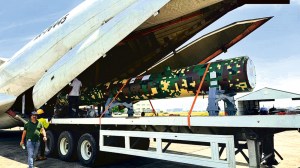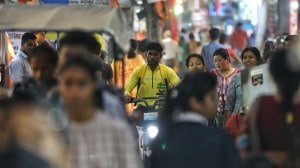- India
- International
HC permits BMC to begin waste processing at Kanjurmarg landfill
Order has upset environmentalists who oppose the change in processing technology.
Nearly 11 years after the Brihanmumbai Municipal Corporation (BMC) received a plot of land in Kanjurmarg to dump ad process garbage, the civic body can finally heave a sigh of relief with the court finally clearing the decks for around 4,000 metric tonnes of municipal solid waste generated by the city to be dumped here, daily. The Bombay High Court on Tuesday allowed the BMC to begin dumping and processing activities at the Kanjurmarg landfill, following years of litigation with local residents and activists.
Once operations start, the Kanjurmarg landfill will be Mumbai’s first landfill to have a facility for scientifically processing municipal waste.
While the BMC and officers of the Solid Waste Management (SWM) department heaved a huge sigh of relief on Tuesday, experts believe the landfill cannot be a long-term and sustainable solution for the city’s garbage problems.
“Once the Kanjurmarg plant starts functioning, most of our solid waste problems will be resolved,” said Prakash Patil, deputy municipal commissioner, solid waste management (SWM).
According to him, at Kanjurmarg, in the first year, garbage would be dumped in one of the seven cells which would be shut at year end and the following year, garbage would get dumped in the second cell and so on.

“At the end of the seventh year, garbage from the first cell will have been processed and the cell will be free to be utilised again,meaning that the plant will be a lasting solution for our waste problems if it functions efficiently,” he added. The BMC’s plan is to stop the current practice of unscientific dumping at the Deonar and Mulund plants and start a facility to process 2000 MT per day waste at Deonar and 500 MT per day at Mulund.
However, the height of waste tower at Deonar is about 55 metres at present. That’s as high as a ten-storey building, and also much higher than the 35 metres permissible according to norms of the Airports Authority of India. Also, Deonar continues to receive around 5,500 metric tonnes, while Mulund receives about 500 metric tonnes daily.
Moreover, experts believe the Kanjurmarg plant is beseiged by flawed planning. For one, Kanjurmarg is a low-lying area. “For windrow composting (proposed technology to process 1000 tonnes per day at Kanjurmarg), a large space is required and the waste has to be covered and it takes around 25 days to produce the compost. What happens to waste that will keep coming during these 25 days and who in Mumbai will use this compost? Even bio-methanation takes a long time. Besides, the closed cells for windrow composting is generally underground – something that cannot be attempted at the low-lying site. And, a tsunami or any heavy flood will wash away the cells,” said Amiya Sahu, president at National Solid Waste Association of India.
The BMC is aware that landfills are not a sustainable solution to Mumbai’s garbage. Therefore, after years of failing to enforce segregation at source, the BMC has plans to set-up small decentralised waste processing units at the ward-level. “These 5 MT waste prcoessing units will divert waste from the dumping grounds,” said Patil. The BMC claims the 2,000-2,500 metric tonnes of construction waste (debris and silt) generated daily is anyway being sent outside the city for dumping.
Meanwhile, the HC order has upset environmentalists who opposed the change in technology for processing waste at the Kanjurmarg plant as well as the wall built around the site which they claim has blocked tidal water to the mangroves at the site. The court has also restrained the litigants from filing a petition against the environmental clearance for the project in the National Green Tribunal.
Of the total area of 141 hectares at Kanjurmarg, the project site has nearly 23 hectares of mangrove forest. The 12 hectares of mangroves in the southwestern side is relatively starved of tidal water as a result of the wall built by the BMC, a concern that was raised by NGO Vanashakti.
“The right of a litigant to raise issues before a competent authority like the GNT has been taken away from us,” said D Stalin, project director, Vanashakti, reacting to the judgment.
The BMC’s SWM department has also promised that a buffer zone of 500m around the Kanjurmarg dumping ground would be set aside as a no-development zone and enzyme BIOWISH will be used to control odour.
The environment clearance has laid down conditions such as concretising the road leading to the dumping ground from the Eastern Express Highway to avoid generation of dust for the project.
Moreover, leachates from the dump site should not be allowed to contaminate the surrounding area, the compound wall should have sufficient openings to allow tidal water to reach the mangroves and the staff should be trained to ensure zero spillage of garbage during transport.
‘Segregation, incineration at existing dumping grounds is the solution’
If the BMC has to comply with the service level benchmarks set up by the Ministry of Urban Development (MoUD) for providing quality basic civic services to citizens, 100 percent waste needs to be segregated and only wet waste should make its way to the dumping grounds and be scientifically disposed, says Patil.
According to BMC officials, at present 3-4 per cent of the waste is segregated and in the unorganised sector, around 30 per cent of waste is segregated. Officials add that mixed waste is being currently disposed off”unscientifically” at the dumping ground.
Since 2013, the BMC has served about 16.6 lakh notices to housing societies and commercial establishments for failing to comply with waste segregation norms. In February 2014, the corporation finalised a Rs 2.2-crore contract for a period of one year for collecting dry waste from across Mumbai.
Dry waste segregation centres have been set up in 11 wards, where the work has been assigned to women self-help groups, mainly women rag-pickers who can earn from the recyclable waste they segregate and sell that to recycling companies.
However, residents complain that in many parts, they are unaware of the new facilities.
“Dry waste centres are now functioning in almost all the wards and tempos go around the ward collecting dry waste. But publicity of the BMC on this facility is inadequate and people do not know of this. But it is also the citizen’s responsibility to first segregate and get in touch with the ward offices to know of such centres,” says activist Priya Ubale.
Sahu believes for a space-crunched Mumbai, incineration of mixed waste at present is the solution.
“There is technology available to incinerate mixed waste and produce steam that can be used to generate power through steam turbines,” he says. “Segregation will not begin overnight and take a generation to be the norm, like it took in developed countries, so, we should incinerate the mixed waste that reaches the dumping grounds at present,” he adds.
He estimates that Mumbai will need at least 5-6 incinerators to process waste it generates every day.
Even the proposed regional landfill site at Taloja meant to act as a common scientific solid waste management plant to dispose of 2,500 metric tonnes of waste daily from Thane, Kalyan-Dombivali, Bhiwani-Nizampur, Ulhasnaagar, Ambarnath and Kulgaon-Badlapur has failed to take off.
Apr 20: Latest News
- 01
- 02
- 03
- 04
- 05






































